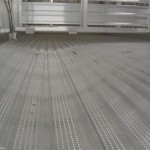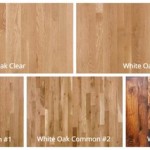How to Install Vinyl Plank Flooring On Slab
Vinyl plank flooring offers a durable, stylish, and budget-friendly alternative to traditional hardwood floors. When installed on a concrete slab, it can significantly enhance the look and feel of a space. While the installation process demands time and effort, it is achievable with proper preparation and execution. This article will guide you through the essential steps involved in installing vinyl plank flooring on a concrete slab.
1. Prepare the Concrete Slab
The first step is to prepare the concrete slab for optimal installation. This involves ensuring a clean, dry, and level surface.
- Clean the Slab: Thoroughly clean the slab with a vacuum cleaner and a damp mop to remove debris, dirt, and dust. Ensure the surface is free from any loose material or contaminants.
- Dry the Slab: Ensure the slab is completely dry before proceeding. If necessary, use a dehumidifier to accelerate the drying process.
- Level the Slab: Unevenness in the slab can create a bumpy floor surface. To address this, use a self-leveling compound to fill in any cracks, voids, or significant irregularities.
2. Install an Underlayment
Once the slab is adequately prepared, install an underlayment to provide a protective layer between the concrete and the vinyl planks. The underlayment serves several purposes:
- Protection: It shields the vinyl planks from moisture and unevenness in the slab.
- Comfort: It adds a cushioning effect, making the floor feel warmer and softer underfoot.
- Sound Reduction: It minimizes sound transmission from the concrete slab, contributing to a quieter environment.
Select an underlayment appropriate for vinyl plank flooring. Foam underlayment is a popular choice for its cushioning and sound-dampening properties. Other options include cork and rubber underlayment, which provide similar benefits.
Install the underlayment according to the manufacturer's instructions. Typically, it involves rolling out the underlayment, aligning the seams, and securing it to the slab using tape or staples.
3. Install the Vinyl Plank Flooring
With the underlayment ready, you can begin installing the vinyl plank flooring. The installation method depends on the specific type of vinyl plank chosen. Some options include click-lock systems, glue-down installation, and floating installation.
Click-Lock Installation
Click-lock vinyl plank flooring is designed for easy installation. The planks have a tongue-and-groove system that allows them to be easily interlocked without the need for adhesives.
- Start by cutting the first plank to fit the wall, leaving a 1/4-inch gap for expansion.
- Align the second plank with the first, making sure the grooves and tongues mesh correctly. Gently click the planks together.
- Continue installing the planks in rows, ensuring they are tightly interlocked.
- Cut planks to fit around obstacles such as doorways, columns, and pipes.
- Maintain a consistent gap along the walls to allow for expansion and contraction due to temperature changes.
Glue-Down Installation
Glue-down vinyl plank flooring requires using adhesive to secure the planks to the underlayment. This method provides a more stable and durable installation.
- Apply a layer of adhesive to the underlayment using a notched trowel.
- Lay the planks on the adhesive, pressing them firmly into place.
- Use a roller to ensure a strong bond between the planks and the underlayment.
- Allow the adhesive to cure according to the manufacturer's instructions before applying weight or furniture to the floor.
Floating Installation
Floating vinyl plank flooring is a popular option as it does not require adhesive or nails. The planks are simply clicked together and allowed to float over the underlayment.
- Start by installing the first row of planks along a wall, leaving an expansion gap.
- Click the remaining rows together, ensuring a tight fit.
- As you reach obstacles, cut the planks to fit and secure them with molding or trim pieces.
- Make sure to leave an expansion gap between the floor and the walls.
Regardless of the installation method chosen, it is essential to follow the manufacturer's instructions for proper installation and care.
4. Finishing Touches
Once the vinyl plank flooring is installed, complete the finishing touches. These include installing transition strips, baseboards, and moldings. Transitions strips are used to connect the vinyl plank flooring to other flooring types, such as carpet or tile. Baseboards and moldings help to cover the expansion gap between the floor and walls, providing a clean and finished look.
These steps will help you install vinyl plank flooring on a concrete slab successfully. Proper preparation, careful execution, and attention to detail will ensure a durable and aesthetically pleasing floor that enhances your home's appearance and comfort.

Easy Ways To Install Vinyl Plank Flooring On Concrete

Easy Ways To Install Vinyl Plank Flooring On Concrete

How To Install Vinyl Or Laminate Floors In A Basement Over Concrete Slab

How To Prepare A Concrete Floor For Vinyl Flooring Parrys

10 Beginner Mistakes Installing Vinyl Plank Flooring

Tips For Installing Vinyl Plank Over Concrete Floors Lemon Thistle

Lvp Flooring Installation How To Install Luxury Vinyl Plank In A Basement Diy

Easy Ways To Install Vinyl Plank Flooring On Concrete

Tips For Installing Vinyl Plank Over Concrete Floors Lemon Thistle

Installing Vinyl Plank Flooring For Beginners Anika S Diy Life








